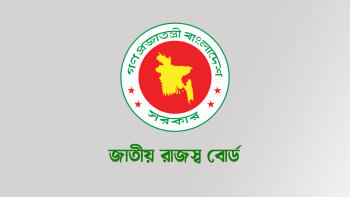A quick reaction to Bangladesh Bank’s MPS for July-December 2024

Broadly, the policy measure to control inflation remains the same in the Monetary Policy Statement (MPS) of the Bangladesh Bank for July-December 2024. In May 2024, the Bangladesh Bank hiked the policy rate by 50 basis points to make it 8.5 percent.
This was a continuation of earlier attempts to increase policy rates. For example, in January 2024, the policy rate was increased from 7.75 percent to 8 percent.
The central bank increases policy rates to hike the interest rates in the commercial banks. This was a welcome move as the interest rate cap on lending and deposit rates during April 2020- June 2023 was a wrong policy tool to contain inflationary pressure.
Following a lot of discussions, the Bangladesh Bank's next attempt to introduce a reference lending rate - the six-month moving average rate of treasury bills (SMART) was also a total failure in bringing down inflation.
On top of that, the Bangladesh bank printed money that further increased inflationary pressure on the people. Even after the policy rate hike in May 2024, the inflation rate is over 9 percent. So, the effectiveness of the increased policy rate is yet to be observed.
The Bangladesh Bank has opted to use policy rates as a tool to control inflation much later than other central banks in the world, including developing countries such as India. As a result, the central banks of those countries have successfully curtailed the inflation rate.
Though the policy rate has not been changed, Bangladesh Bank has to remain open to further increases in policy rates to curb inflation.
Some changes have been made in the monetary and credit projection for fiscal year (FY) 2025. Though credit growth to the private sector remains the same at 9.8 per cent, credit to the public sector will grow by 14.2 percent till December 2024 and by 17.8 percent by June 2025.
This implies that the government borrowing from the banking sector will increase. The reliance of the government on bank borrowing risks crowding out of the private sector. If commercial banks are under pressure to provide loans to the public sector, the loanable funds to the private sector will be reduced, which could further increase interest rates.
As it is, the cost of doing business is high in Bangladesh due to factors such as a hike in electricity prices, lack of adequate and smooth infrastructure and technology, lack of skilled human resources and corruption. To control inflation successfully through using interest rate tools, the government must create an enabling business environment and fix these problems so that the private sector does not have to blame high interest rates as a barrier.
The net foreign assets (NFA) are projected to grow by 2.3 percent by December 2024 and by 17.8 percent by June 2025. Bangladesh Bank says that this increase will be due to an anticipated surplus in the overall balance of payment. Bangladesh Bank predicts a moderate growth of exports and imports and a substantial growth in remittance.
However, the performance of the external sector in FY2024 has been poor. Indeed, due to data reconciliation, export growth has been negative. With ongoing dampened global demand there is not much expectation on export growth. The balance of payments situation cannot be fixed by that much of an extent relying on remittances only, which also did not pick up substantially.
The MPS for July-December 2024 also discusses banking sector governance and provides a roadmap for reducing non-performing loans (NPL) by 2026. Banking sector problems have been widely discussed. They are also wide-ranging and include institutional, regulatory, and legal issues. Unfortunately, the solution to these problems is not only technical but also political in nature.
Dr Fahmida Khatun is the executive director at the Centre for Policy Dialogue and non-resident senior fellow of the Atlantic Council. Views are personal.

 For all latest news, follow The Daily Star's Google News channel.
For all latest news, follow The Daily Star's Google News channel. 



Comments